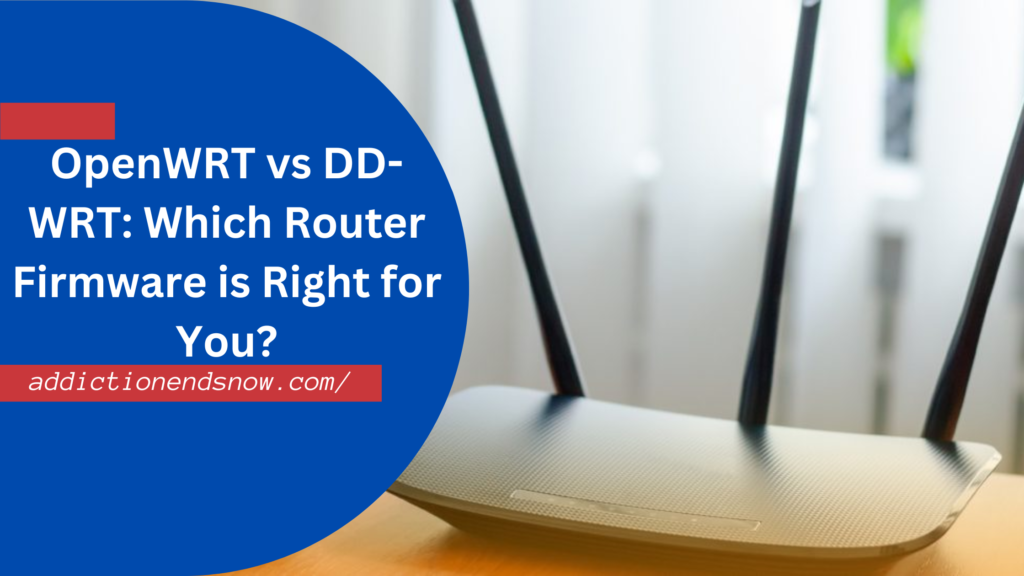When you need more control over your router’s capabilities, performance, and security, custom router firmware like OpenWRT and DD-WRT are excellent alternatives to the stock firmware provided by manufacturers. OpenWRT is known for its full customization and modular design, making it the preferred choice for network professionals and advanced users who need granular control over features like dynamic routing, traffic shaping, and VPN integration.
In contrast, DD-WRT offers a more user-friendly experience, providing a simpler interface while still offering essential features like VPN support, QoS management, and improved Wi-Fi performance. While OpenWRT gives you nearly limitless possibilities, DD-WRT is better suited for users who want a powerful yet easier-to-use option for their home or small office network.
In this article, we’ll compare the two firmwares—OpenWRT and DD-WRT—based on ease of use, performance, security, hardware compatibility, and community support, helping you make an informed decision about which firmware best fits your needs.
What are OpenWRT and DD-WRT?
OpenWRT:
OpenWRT is a highly customizable, Linux-based open-source firmware that essentially turns your router into a fully functional Linux device. Known for its versatility, it allows you to install a wide range of packages, enabling everything from basic routing to complex traffic management and VPN setups.
- Key Features:
- Full Customization: Thousands of packages and modules available to install, providing endless configuration possibilities.
- Security: Constant updates from the OpenWRT community ensure high-level security.
- Performance Control: You can fine-tune your network with features like Quality of Service (QoS), traffic shaping, and advanced routing.
- Modular Design: Add and remove packages as needed, allowing for full control over what features your router supports.
DD-WRT:
DD-WRT is also Linux-based firmware but is generally easier to use than OpenWRT. It offers a balance between user-friendliness and advanced features. Although it’s not as customizable as OpenWRT, DD-WRT supports a wide range of routers and includes powerful features like VPN support and QoS.
- Key Features:
- Ease of Use: DD-WRT has a more approachable web interface, making it easier to set up and configure for less experienced users.
- Stability: Optimized for router performance, DD-WRT ensures stable connections even with multiple devices.
- Advanced Features: Includes support for VPNs, QoS, and mesh networking, making it a versatile option for home or office networks.
Ease of Use: Which Firmware is Better for Beginners?
OpenWRT is the go-to choice for advanced users who need complete control over their router’s functionality. However, it comes with a steep learning curve. You’ll need to be familiar with networking concepts and Linux commands to take full advantage of its capabilities. The flexibility is unmatched, but it requires time and patience to set up and maintain.
On the other hand, DD-WRT is much more user-friendly. Its web interface is simpler, making it an excellent choice for beginners or intermediate users who still want access to advanced features like VPN or QoS. If you’re new to custom firmware, DD-WRT will get you up and running faster without sacrificing too much functionality.
Performance and Features: Which Offers Better Control?
OpenWRT:
For those who prioritize customizability, OpenWRT is the better option. It allows users to control virtually every aspect of their network, from basic routing to dynamic routing protocols like OSPF and BGP. You can also manage multi-WAN setups, configure advanced firewall rules, and implement deep packet inspection for enhanced security.
- Advantages:
- Full control over performance settings.
- Installation of additional software packages to optimize for specific tasks.
- Superior Quality of Service (QoS) management, giving you granular control over bandwidth allocation.
DD-WRT:
While DD-WRT is less customizable, it still offers significant performance improvements over stock firmware. It comes with built-in support for features like VPN, Wi-Fi extenders, and mesh networking, making it more than adequate for most home users. Its QoS is easier to configure than OpenWRT’s, although less granular.
- Advantages:
- Faster setup for advanced features like VPN.
- Good balance between performance and ease of use.
- Compatible with a wide range of routers, even older models.
Security: Which Firmware Offers Better Protection?
Security is paramount in today’s connected world, and both OpenWRT and DD-WRT provide enhanced security features compared to stock firmware.
- OpenWRT: Being an open-source project with constant community contributions, OpenWRT frequently releases security patches. It offers advanced firewall configurations, encrypted DNS, and strong support for VPNs. OpenWRT’s modular approach also means you can install additional security packages like SSL/TLS certificates or intrusion detection systems (IDS).
- DD-WRT: DD-WRT also provides solid security, but updates may not be as frequent as OpenWRT. That said, it supports VPN integration out of the box and allows for secure remote access to your network. While the security features are easier to configure than OpenWRT, they may not be as advanced.
Compatibility: Which Firmware Works with More Routers?
DD-WRT is widely known for its extensive hardware compatibility. It supports a large variety of routers, including older models that might not have official support from OpenWRT. This makes DD-WRT a better choice if you have a less common or older router model. The installation process is straightforward for most supported routers.
OpenWRT, while still compatible with many routers, doesn’t offer as broad of a hardware support range. It’s more focused on newer or more advanced routers, so it’s crucial to check if your router is compatible before attempting an install.
Community Support and Updates: OpenWRT vs DD-WRT
OpenWRT: OpenWRT has an active, engaged community that constantly provides updates, patches, and new features. The OpenWRT forums and documentation are rich with user guides, tutorials, and troubleshooting tips, making it easier for advanced users to solve issues and contribute to the firmware’s ongoing development.
DD-WRT: DD-WRT also has a strong community presence, but the frequency of updates isn’t as high as OpenWRT. However, thanks to its simpler interface and wider compatibility, there are plenty of guides and forum discussions to help you get started. If you’re facing issues, the DD-WRT forums and community resources offer extensive troubleshooting help.
Which Firmware is Right for You?
Choose OpenWRT if:
- You’re an advanced user with specific networking needs.
- You want full control over your router’s performance, security, and software packages.
- You need frequent updates and strong security features.
Choose DD-WRT if:
- You’re a beginner or intermediate user who wants access to advanced features without a steep learning curve.
- You have an older or less common router that may not be supported by OpenWRT.
- You’re looking for a stable, easy-to-configure solution for VPNs, QoS, and basic network customization.
OpenWRT vs DD-WRT: Quick Comparison
| Feature | OpenWRT | DD-WRT |
| Ease of Use | Best for advanced users | Easier for beginners |
| Customization | Fully customizable with many packages | Limited but more user-friendly |
| Security | Frequent updates & advanced settings | Secure but fewer configuration options |
| Performance | Highly configurable for performance | Great performance with easier setup |
| Router Support | Supports modern routers, less broad | Broad compatibility, supports older routers |
| Best For | Users needing full control | Users wanting ease of use with advanced features |
Conclusion: OpenWRT vs DD-WRT
Ultimately, the choice between OpenWRT and DD-WRT comes down to your specific needs and technical expertise. OpenWRT offers the highest level of customization, making it ideal for advanced users who want to control every aspect of their network. DD-WRT is more user-friendly and offers enough advanced features to meet the needs of most home users.
Both firmware options will significantly improve your router’s performance and security compared to stock firmware, so whether you choose OpenWRT for full control or DD-WRT for ease of use, you’re making a solid choice for your network.
FAQ: OpenWRT vs DD-WRT
Yes, you can switch between OpenWRT and DD-WRT, but it requires re-flashing your router’s firmware. Make sure your router supports both firmware options and follow the correct installation process.
Both OpenWRT and DD-WRT support VPN setups, but OpenWRT offers more advanced configuration options, while DD-WRT provides a simpler, quicker setup process.
In terms of speed, OpenWRT may perform better due to its advanced tweaking capabilities. However, the actual performance depends on your router hardware and configuration.
No, both firmware options have a list of supported routers. Always check the compatibility list for OpenWRT or DD-WRT before installing.
OpenWRT offers more comprehensive mesh networking features due to its modular nature, but DD-WRT also supports basic mesh setups and Wi-Fi extenders.



